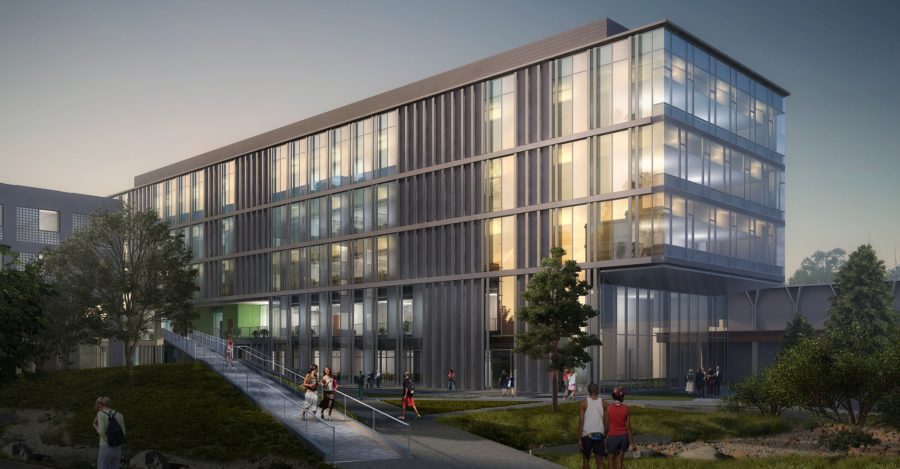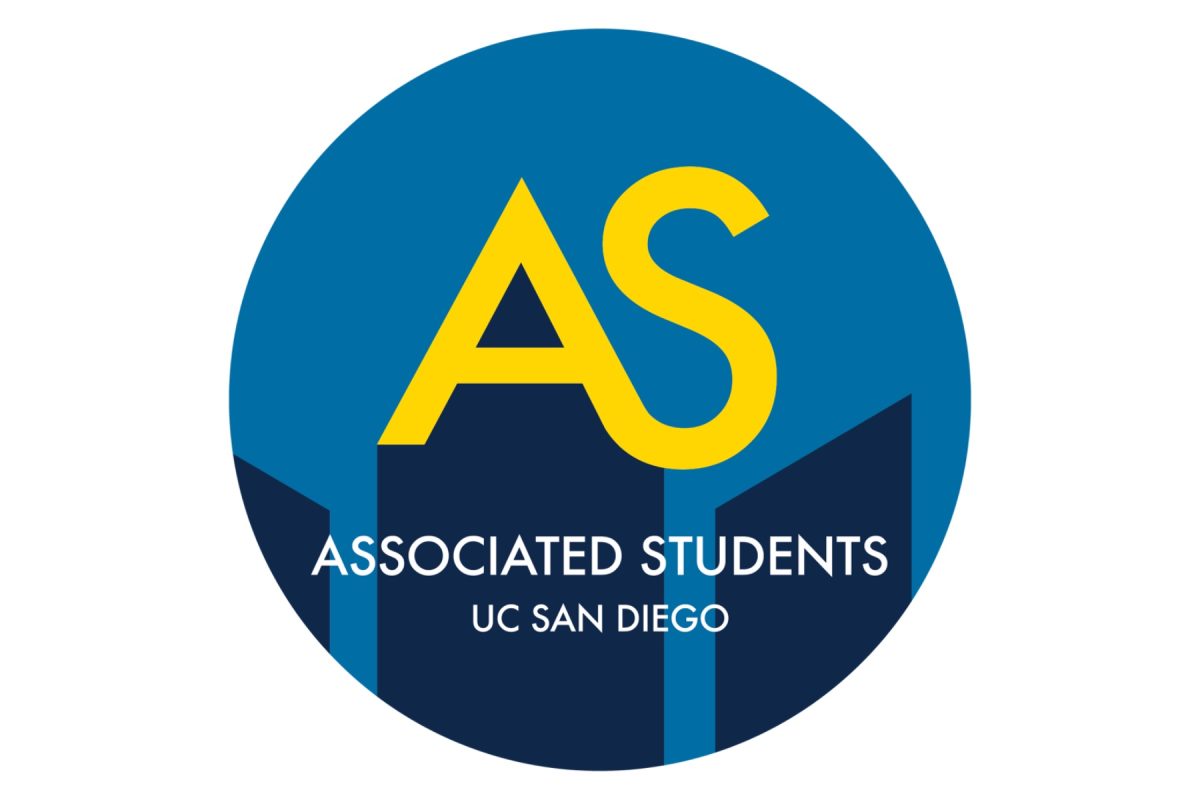The Facilities Design and Construction department is constructing a biological and physical sciences building near Revelle College, creating more classrooms and laboratories to facilitate the rapidly growing fields of study currently housed in the Natural Science Building. The project began this summer, but the ceremonial groundbreaking will take place on Oct. 14. The facility is expected to be completed in June 2018.
The seven-story, 128,000 square-foot facility, which cost $111 million, will be utilized by students and scientists working in fields ranging from neurobiology to biochemistry. It will feature offices, classrooms and laboratories as well as eight undergraduate teaching labs amid one of the largest auditoriums on campus, with seating for 175 students.
In the basement, researchers will examine molecules using a state-of-the-art laser facility and a National Institutes of Health national resource for NMR molecular imaging of proteins.
“NMR, or nuclear magnetic resonance spectroscopy, is a powerful tool used by chemists to understand the chemistry of molecules, particularly proteins,” Kim McDonald, the director of science communications, told the UCSD Guardian.
Designed by Los Angeles-based CO Architects — who drew up the model for the nearly finished Outpatient Pavillion at La Jolla’s Health Science campus, to be completed this May — the new Biological and Physical Sciences Building will be constructed with the environment and California’s depleted water supply in mind, McDonald explained. This green objective is to be achieved by outfitting the building with eco-friendly gadgets and appliances.
“The building will inspire a 45-percent water-use reduction system through energy-efficient equipment and fixtures, drought-tolerant plantings and a condensate recovery system,” McDonald said.
From 2003 to 2014, the number of students majoring in biology increased by 95 percent, a statistic McDonald cited as one of the major reasons why a new science building is needed on campus. He also cited the expected undergraduate admissions increase.
“As you probably know with this year’s large entering freshman class, UC San Diego will need to make available more teaching and laboratory facilities for the 6,000 additional undergraduates that will be admitted over the next 5 years, many of whom will want to major in science or engineering,” McDonald stated.
Thurgood Marshall College sophomore Revati Rashingkar, a physiology and neuroscience major, believes the new facility will be helpful to science students like her, who study in a department with a disproportionate student-to-faculty ratio.
“Undergraduate lower division science classes are usually crowded,” Rashingkar said. “The [Biological and Physical Sciences Building] will be beneficial to students who choose to take labs.”
However, Rashinkar expressed concern about the loss of plant life and open space on campus.
“I think it’s great that UCSD is creating more resources for students,” she said, “but it also means the loss of green space, which we don’t have a lot of in the middle of campus.”
Still, Rashingkar said that “new labs will create more slots and will make it less of a struggle for everyone to get the lab they want [or] need.”
McDonald echoed her sentiment.
“The [Biological and Physical Sciences Building] will allow UCSD to continue to provide science and engineering students with the necessary teaching and laboratory facilities so they can graduate in a timely manner,” McDonald said.
The construction of the Biological and Physical Sciences Building comes after years of award-winning research and development in the STEM departments at UCSD, and follows suit with the pace of construction on campus in recent years, which saw the erection of at least six STEM facilities since 2010.
When asked about how the new addition will affect UCSD’s reputation as a STEM epicenter, McDonald replied optimistically.
“UC San Diego is considered a world leader in the fields of neurobiology, quantitative biology, chemistry and, in particular, research on the mind and brain,” McDonald said. “So the [Biological and Physical Sciences Building] will allow our university to build on these strengths to continue to recruit the best faculty in the world.”








